Zigzag Your Way To Lean
With this strategy, calories are increased and decreased to help kick the metabolism to burn fat and maintain as much muscle as possible.

Did you know that calorie ups and downs can boost your metabolism?
AS PHYSIQUE ATHLETES WE LIVE OUR WORLD FOCUSED ON DIETING. Dieting to build muscle. Dieting to get lean. This is true for most every division of the sport. We are plagued with trying to lose fat without losing the hard earned muscle, especially as natural athletes. In my experience with traditional diets it can be a challenge getting as lean as I prefer for stage if I keep my calories exactly the same day in and day out. And then I am forced to cut my calories lower and lower as I get closer to the show.
And let me tell you, low body fat and low calories makes for miserable days. However, after several trial and errors, I found a method that doesn’t involve super strict calorie cutting plus two hours of cardio each day. In fact, I was able to eat a lot of food and some days found it hard to eat everything. I know, right, complaining because I have to stuff more food in my face is not something most physique athletes are doing as we prepare for our competitions.
WHAT’S THE SECRET?
It is called the zigzag diet. Which basically means eating in rotation. With this strategy, calories are increased and decreased to help kick the metabolism to burn fat and maintain as much muscle as possible. But the best part is it is super easy to follow. I know it sounds too good to believe, but keep reading to find out how zigzag dieting can help you reach your physique goals.
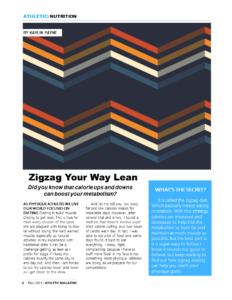
TRICKING THE METABOLISM
With a typical diet you decrease not only your body fat, but also some of your muscle mass. After a traditional calorie cutting program you will weigh less, but your body fat might not get as low as you want because your muscle mass has gone down too, altering the percentage.
We all know how easy it is to regain weight post-competition. We go back to eating “normal” and the pounds add on quicker than one would expect. Often times those pounds are not muscle, but body fat. The enemy of the physique athlete most of the time. The reason this happens is that your body responds to the decrease in calories and slows its metabolism to hold onto fat.
The solution is to trick your body into believing it has more than enough food. A surplus, if you will. In theory, this will keep your metabolism in the fat-burning, not fat-conservation, mode and at the same time hold on to the beautiful muscle you have been building.
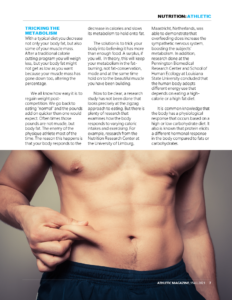
Now to be clear, a research study has not been done that looks precisely at the zigzag approach to eating. But there is plenty of research that examines how the body responds to varying caloric intakes and exercising. For example, research from the Nutrition Research Center at the University of Limburg, Maastricht, Netherlands, was able to demonstrate that overfeeding does increase the sympathetic nervous system, boosting the subjects’ metabolism. In addition, research done at the Pennington Biomedical Research Center and School of Human Ecology at Louisiana State University concluded that the human body adopts different energy use that depends on eating a high-calorie or a high fat diet.
It is common knowledge that the body has a physiological response that occurs based on a high or low carbohydrate diet. It also is known that protein elicits a different hormonal response in the body compared to fats or carbohydrates.
EATING LESS WONT BE GOOD ENOUGH
Using information from some of the research it is possible to extrapolate a way to figure out what and how much to eat…and get it to work in your favor. However, before we jump there, let me explain why I do not believe that simply eating less is good enough. We know that the body is managed by hormones. Everything we eat creates a hormonal response.
So, if we go about simply cutting calories and protein, such as the traditional diet plans in America tell us to do, we can cause a reduction in our own growth hormone, IGF-1, insulin and androgens. This will definitely create suboptimal conditions for muscle building.
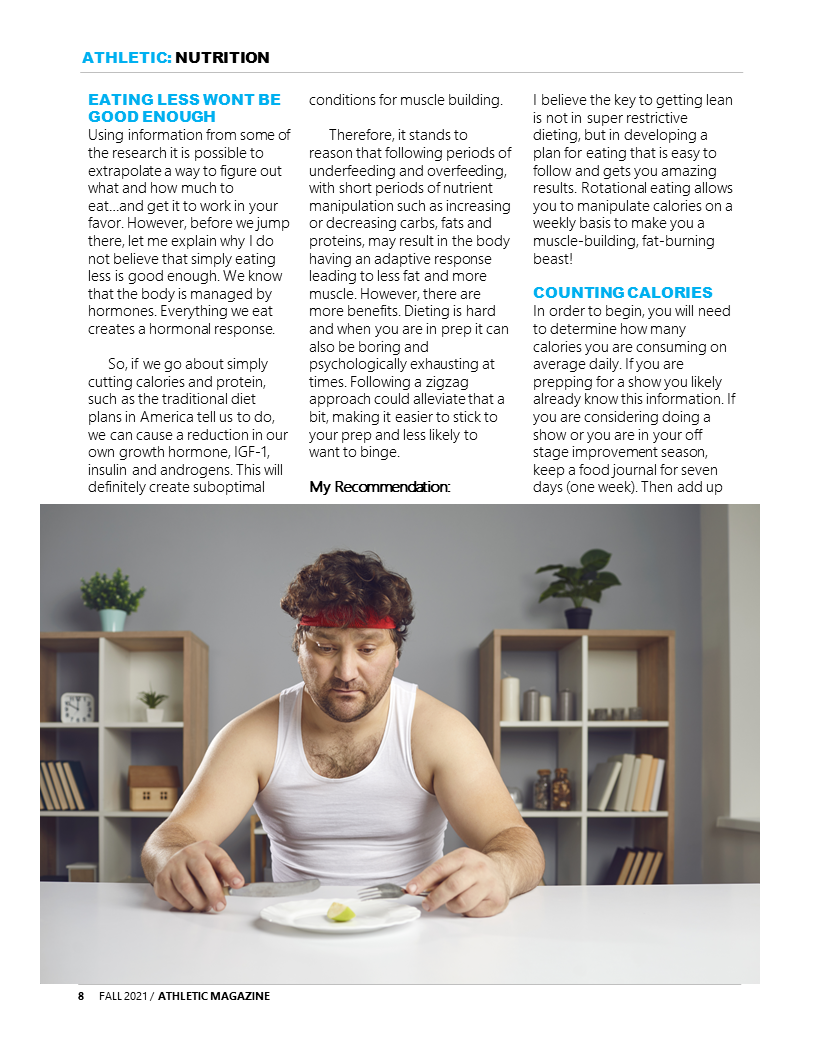
Therefore, it stands to reason that following periods of underfeeding and overfeeding, with short periods of nutrient manipulation such as increasing or decreasing carbs, fats and proteins, may result in the body having an adaptive response leading to less fat and more muscle. However, there are more benefits. Dieting is hard and when you are in prep it can also be boring and psychologically exhausting at times. Following a zigzag approach could alleviate that a bit, making it easier to stick to your prep and less likely to want to binge.
My Recommendation:
I believe the key to getting lean is not in super restrictive dieting, but in developing a plan for eating that is easy to follow and gets you amazing results. Rotational eating allows you to manipulate calories on a weekly basis to make you a muscle-building, fat-burning beast!
COUNTING CALORIES
In order to begin, you will need to determine how many calories you are consuming on average daily. If you are prepping for a show you likely already know this information. If you are considering doing a show or you are in your off stage improvement season, keep a food journal for seven days (one week). Then add up the total calories and divide it by seven to get to your daily average. As an example, if you ate 17,500 calories in a week, that comes to 2,500 calories per day as an average. If your weight is stable, this is how many calories you need to maintain your current weight. This is the starting point for your zigzag.
EATING
After you calculate your daily calorie intake, the next step is to decide on the amount of fat, protein and carbs you will eat daily. Fat is very important to keep track of because it carries more calories per gram (9 calories per gram) than both carbohydrates and protein which carry 4 calories per gram. The body doesn’t need a high amount of carbs and fats for fuel. One primary source is sufficient. Fats are necessary for life and hormone regulation. However, carbs give us a nice full muscle belly appearance. Therefore, I recommend that you begin cutting calories in the fat intake category. Most bodybuilders will want to keep fat intake at about 15% of total calorie intake.
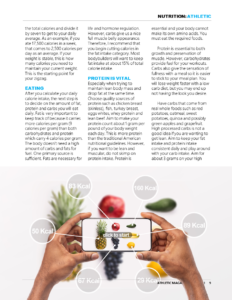
PROTEIN IS VITAL
Especially when trying to maintain lean body mass and drop fat at the same time. Choose quality sources of protein such as chicken breast (skinless), fish, turkey breast, eggs whites, whey protein and lean beef. Aim to make your protein count about 1 gram per pound of your body weight each day. This is more protein than the traditional American nutritional guidelines. However, if you want to be lean and muscular, do not skimp on protein intake. Protein is essential and your body cannot make its own amino acids. You must eat the required foods.
Protein is essential to both growth and preservation of muscle. However, carbohydrates provide fuel for your workouts. Carbs also give the sensation of fullness with a meal so it is easier to stick to your meal plan. You will lose weight faster with a low carb diet, but you may end up not having the look you desire.
Have carbs that come from real whole foods such as red potatoes, oatmeal, sweet potatoes, quinoa and possibly green apples and grapefruit. High processed carbs is not a good idea if you are wanting to get lean. Aim to keep your fat intake and protein intake consistent daily and play around with your carb intake. Aim for about 3 grams on your high calorie days and lower them on your lower calorie days.
BURN THE FAT
To lose body fat you will need to have a caloric deficit. The zigzag works by manipulating your body’s natural desire to slow down it’s metabolic rate in response to perceived starvation. However, by systematically decreasing and then increasing calories, you can exploit this survival mechanism to your advantage and prevent the plateaus in your fat loss while protecting your skeletal muscle.
The preservation of muscle is important because muscle regulates the metabolism. More lean mass equals more calories that you will burn.
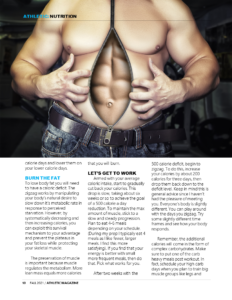
LET’S GET TO WORK
Armed with your average caloric intake, start to gradually cut back your calories. This drop is slow, taking about six weeks or so to achieve the goal of a 500 calorie a day reduction. To maintain the max amount of muscle, stick to a slow and steady progression. Plan to eat 4-6 meals depending on your schedule. (During my prep I typically eat 4 meals as I like fewer, larger meals. I find this more satisfying). If you find that your energy is better with small more frequent meals, then do that. Pick what works for you.
After two weeks with the 500 calorie deficit, begin to zigzag. To do this, increase your calories by about 200 calories for three days, then drop them back down to the deficit level. Keep in mind this is general advice since I haven’t had the pleasure of meeting you. Everyone’s body is slightly different. You can play around with the days you zigzag. Try some slightly different time frames and see how your body responds.
Remember, the additional calories will come in the form of complex carbohydrates. Make sure to put one of the carb heavy meals post workout. In fact, schedule your high carb days when you plan to train big muscle groups like legs and back to get the biggest benefits.
IF YOU GET A STRONG HOLD OF THIS CONCEPT IN YOUR OFF-SEASON YOU WILL LIKELY HAVE LESS FAT TO CUT FOR COMPETITION.
John Doe
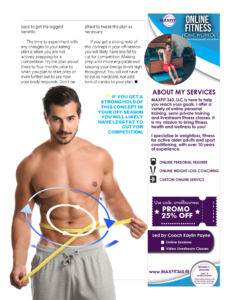
The time to experiment with any changes to your eating plan is when you are not actively prepping for a competition. Try this plan about three to four months prior to when you plan to start prep or even further out to see how your body responds. Don’t be afraid to tweak the plan as necessary.
If you get a strong hold of this concept in your off-season you will likely have less fat to cut for competition. Making prep a lot more enjoyable and keeping your energy levels high throughout. You will not have to cut so hardcore, nor add tons of cardio to your plan.

About the Author:

Kaylin Payne
Kaylin has achieved IPL Pro status in Figure and Women's Athletic. And has earned a Women's Athletic Pro title. She has also competed in the Bikini division. She is the creator and owner of MAXFIT 360, LLC. She has a M.S. in Sport Psychology, is a certified fitness trainer, group exercise instructor and a track and field coach.
Share this post:

ATHLETIC Magazine – Training Kids Early
“It is important to include our children in our training programs, as well as our everyday physical activities for several reasons…”

New IPL Athletic Open & Masters Pro, Scott Serig Lands Cover Of ATHLETIC Magazine
“I’m lucky to have learned about the IPL when I was looking for a drug-tested organization to compete on an even playing field…I am blown away that I was chosen for the cover of ATHLETIC Magazine. It’s an honor to be a part of the IPL.”

ATHLETIC Magazine – Stay Fit While Travelling
…luckily, there are some tips on how to stay fit while traveling. Get ready and take notes for your next trip!

ATHLETIC Magazine – Burn More Fat! With Peppers
That is right, you heard it correctly. Peppers. But not just any peppers.
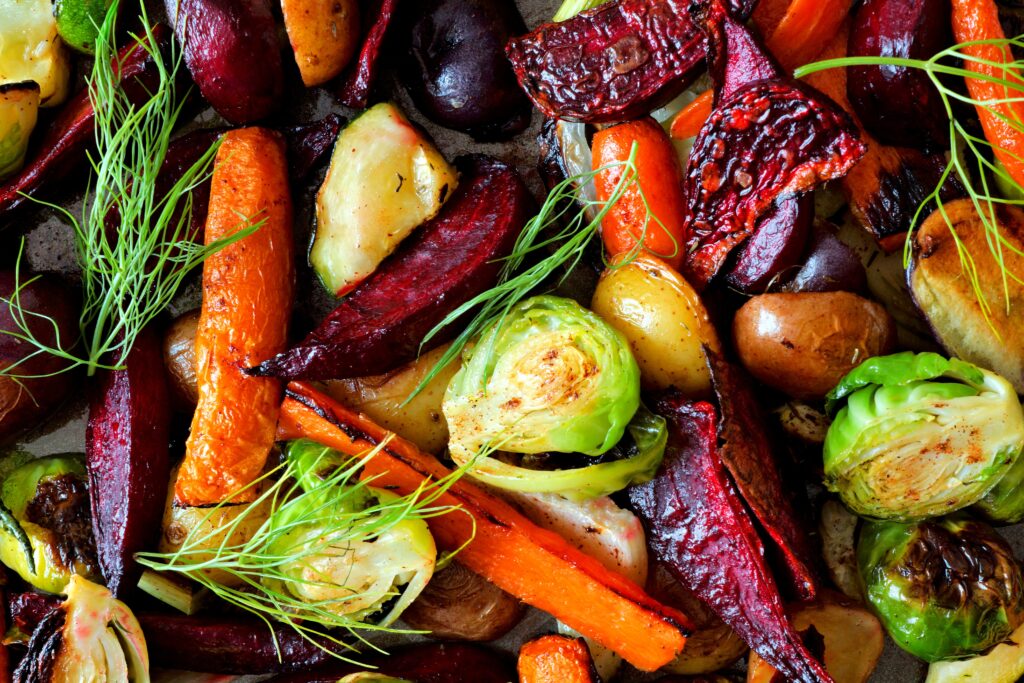
Natural GAINZ Magazine – Fiber: Soluble Vs. Insoluble
Most people know it’s recommended to get more fiber in your diet, but do you know the two different types of dietary fiber and the purpose of each?

Natural Bikini Magazine: 5 Plant-Based Protein Recipes
Whether you’re a seasoned vegan or simply looking to incorporate more plant-based meals into your diet, these five recipes showcase the versatility and protein-rich goodness of plants.
